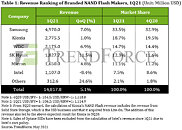
Samsung Exynos 2400 SoC Performance Figures Leaked, Prototype Betters Next Gen Snapdragon GPU
Samsung's unannounced Exynos 2400 mobile chipset has been linked to the upcoming Galaxy S24 smartphone family, but internet tipsters have speculated that the in-house SoC will be reserved for the baseline model only. The more expensive Plus and Ultra variants could be the main targets for flagship smartphone fetishists - it is possible that Qualcomm's upper echelon Snapdragon 8 Gen 3 chipset is set to feature within these premium devices. Samsung's Exynos processors are not considered to be fan favorites, but industry insiders reckon that the latest performance figures indicate that Samsung's up-and-comer has the potential to turn some heads. Exact specifications for the Exynos 2400 are not public knowledge - one of the tipsters suggests that a 10-core layout has been settled on by Samsung, as well as a recent bump up in GPU core count - from 6 to 12. The company's own 4 nm SF4P process is the apparent choice set for production line.
A leaker has posted benchmark scores generated by an unknown device that was running an Exynos 2400 SoC - the Geekbench 5 results indicate an average single-core score of 1530 with a peak of 1711. The multi-core average score is shown to be 6210, and the highest number achieved is 6967. Therefore the Exynos 2400 is 31% percent faster (in multi-core performance) than the refreshed Snapdragon 8 Gen 2 variant currently found in Galaxy S23 Ultra smartphones, but the divide between the two in terms of single-core performance is not so great. The 2400 manages to outpace (by 30%) Apple's present generation Bionic A16's average multi-core score, although the latter beats the presumed engineering sample's single-core result by 20%. The Exynos 2400 will face a new lineup of rival mobile processors in 2024 - namely Apple's next generation Bionic A17 and Qualcomm's Snapdragon 8 Gen 3, so it is difficult to extrapolate today's leaked figures into a future scenario.
A leaker has posted benchmark scores generated by an unknown device that was running an Exynos 2400 SoC - the Geekbench 5 results indicate an average single-core score of 1530 with a peak of 1711. The multi-core average score is shown to be 6210, and the highest number achieved is 6967. Therefore the Exynos 2400 is 31% percent faster (in multi-core performance) than the refreshed Snapdragon 8 Gen 2 variant currently found in Galaxy S23 Ultra smartphones, but the divide between the two in terms of single-core performance is not so great. The 2400 manages to outpace (by 30%) Apple's present generation Bionic A16's average multi-core score, although the latter beats the presumed engineering sample's single-core result by 20%. The Exynos 2400 will face a new lineup of rival mobile processors in 2024 - namely Apple's next generation Bionic A17 and Qualcomm's Snapdragon 8 Gen 3, so it is difficult to extrapolate today's leaked figures into a future scenario.






















































